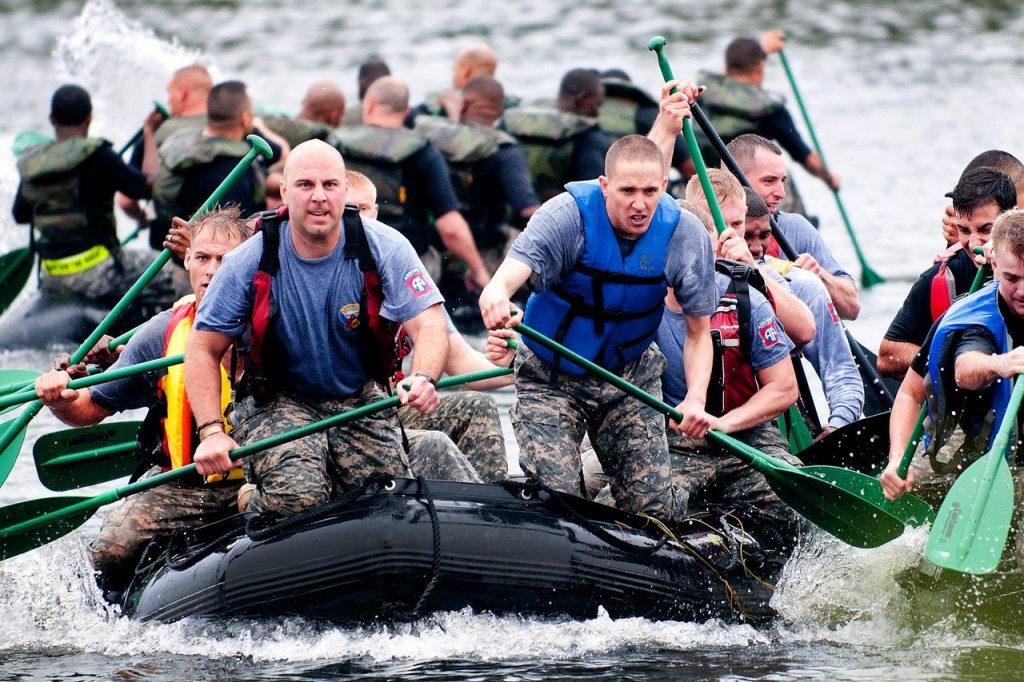How to Successfully Plan a Team-Building Retreat
Team-building retreats and activities are essential for your business, and a team-building retreat will help you make progress and drive revenue when it’s facilitated the right way.

The benefits of team-building retreats include improved collaboration, improving culture among your team because they see you support them, and you can all get to know and understand one another better.
Team-building retreats can help your employees or the team below you see their role in the business overall, and it creates a vision for them and helps them see how they fit into a larger mission and purpose
.
With those benefits in mind, the following are some tips for a great team-building retreat.
Choosing a Location
When you’re choosing a location, you want something that will be away from the hustle and bustle of a city. Options like Santa Fe, Pigeon Forge and Branson all work well. These are good options because you can book large cabins and houses for a relatively affordable price, plus there are attractions nearby when you want to venture out, but it’s not so bustling that it’s going to be distracting.
You want a beautiful and serene location and will allow everyone to focus on the work you’re there to do.
Remember a team-building retreat is different from something like a trade show or convention. Those are often in big cities that are easy for everyone to get to, and large resorts cater to these events. Team building is unique because you do want that laser focus that a quieter environment can offer.
Along with the location itself, you’ll have to consider where you’ll actually be staying. Considerations include:
- Does the venue specifically cater to the needs of corporate retreat and team-building guests? If you can find a venue that does, it can save you a lot of time and effort.
- Think about logistics when you’re choosing a venue or rental. For example, is there adequate parking for everyone? Is it convenient to the airport?
- What are the available facilities?
- What’s your budget?
- What activities do you plan to do, and how well will the venue do at facilitating these?
- How long will the retreat be? Usually, up to three days is the ideal amount of time for these kinds of retreats.
Planning the Details
Once you have a location and venue, you want to start planning the actual implementation of the retreat.
Depending on your business, you might put together a planning committee to help you.
You want to have a clear goal for what the retreat is meant to achieve. Don’t just call it a general team-building retreat. Outline your objective and convey that to attendees well in advance.
Reasons you might bring your team together include improving innovation and creativity, dealing with a particular team weakness, or improving team communication.
Along with your larger goal, you should set smaller, actionable goals. Whenever possible, you want the goals you set to be measurable. This will let you know where you did well on this retreat and where you could improve for the next one.
Make It Engaging
Any time you’re having a team-building retreat, in addition, to having an overarching goal guiding it, you want to make sure it’s engaging. You don’t want your team to be bored, and you want them to feel excited and interested in what’s going on. That way, what they learn is going to resonate and stick with them.
There are a lot of ways to make it exciting and engaging. If you have the budget, you might hire a speaker, for example. Speakers can bring great energy to these types of events. You could have a guest instructor teach your team a new skill, even if it’s not related to your work, or you could have something like a cooking class or a chef-catered dinner.
Don’t Over-Plan
With a corporate or team-building retreat, yes you’re there to work, and you have goals in mind, but you also want your team to be able to relax sometimes and get to know one another on a less formal basis.
This means that you should leave free time in the schedule. If you overschedule your team, it’s going to feel forced and not as fun for them.
Be Understanding of People’s Different Comfort Levels
When you’re planning a team-building event, you have to realize that everyone is unique. Some people will be shyer or reserved than others, and maybe not comfortable with all the activities you have in mind. Be respectful of differences, and don’t make people feel like they’re forced to participate in things they aren’t comfortable with or don’t enjoy.
Get Outdoors
Another benefit of choosing a quieter and more scenically beautiful location for a team-building retreat is the fact that you can get outdoors together.
Getting outdoors gives your team a fresh perspective. It’s energizing, and you can socialize on a less formal basis.
You may even do something challenging as a team, such as a challenging hike or a ropes course, that will bring you all together and help you learn more about one another’s strengths and weaknesses.
Include a Listening Session
Finally, as a team leader, when you’re planning a retreat, you might be so focused on what you want to convey to your team that you’re not thinking about what they want to tell you.
Make time in the schedule for a listening session. During this time, you want to encourage everyone on your team to share what they love about their team, but also what they might wish was different, or when they’ve felt unappreciated. Make sure this is a time your team can speak openly and honestly, without fear of judgment. During this time, you must be an active listener who’s receptive to what everyone is saying and willing to integrate that feedback.

